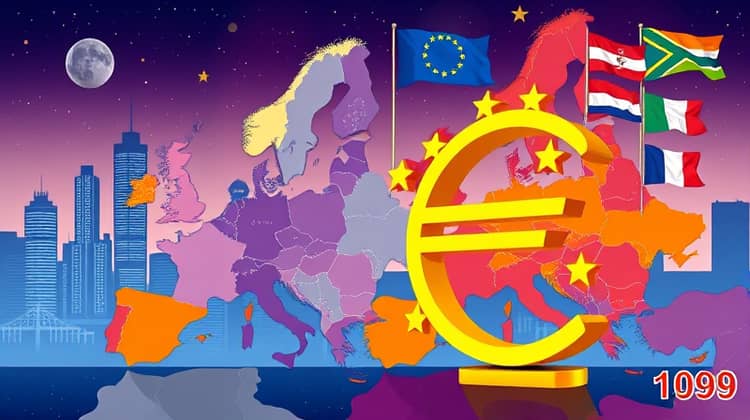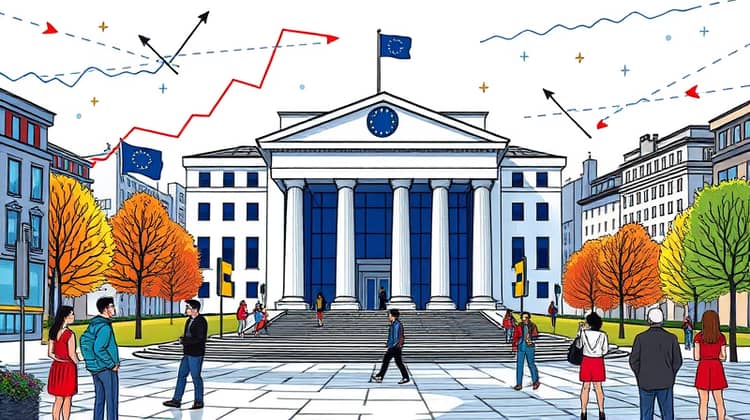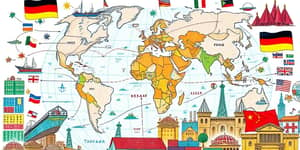Over the past decade, the Eurozone has faced numerous challenges that have tested the very foundations of economic cooperation in Europe. Economic downturns, financial crises, and rising political unrest have all played a role in shaping the current landscape of the Eurozone. This article aims to provide an overview of the significant events and shifts that have marked the Eurozone’s journey through crisis and recovery, highlighting key phases and the resilience of the European monetary union.
Starting with the inception of the Eurozone, we will explore how the introduction of a common currency aimed to foster integration among member states but also laid the groundwork for vulnerabilities. The Global Financial Crisis and subsequent economic turmoils further exacerbated existing issues while revealing systemic weaknesses.
Alongside these economic challenges, political dynamics shifted dramatically, leading to the rise of populist movements across several countries and challenges to traditional political structures.
As we delve deeper into these events, we will address how austerity measures were implemented in response to the crises, the critical role of the European Central Bank, and the lessons learned through recovery phases. Today, as the Eurozone stands at a crossroads with new challenges ahead, understanding this history is crucial for navigating the evolving landscape of European economic policy.
The Birth of the Eurozone

The Eurozone was established in 1999 as a monetary union of European Union (EU) countries that adopted the euro as their official currency. The initiative aimed to promote economic stability, facilitate trade, and bolster political unity among member states. At its inception, it included 11 countries that shared a commitment to maintaining fiscal discipline and economic convergence.
The introduction of the euro generated optimism and excitement about the prospects of economic integration. Member states anticipated increased foreign investments, lower transaction costs, and enhanced price transparency, creating a more competitive environment.
However, the creation of the Eurozone also meant that countries would forfeit part of their monetary sovereignty, placing trust in shared economic governance.
As the Eurozone expanded, it attracted more countries eager to join, with 19 EU member states ultimately adopting the euro by 2013. This expansion reflected the growing belief in the advantages of a unified currency despite national economic disparities.
However, the lack of centralized fiscal policies for managing economic crises began to expose weaknesses in the structure of the Eurozone itself.
Initial success gave way to underlying vulnerabilities, particularly as some member countries faced economic shocks and fiscal mismanagement. The absence of a robust mechanism to address imbalances and instabilities became evident, setting the stage for future crises.
- The Eurozone was created to enhance economic stability and political unity.
- The introduction of the euro was expected to lower transaction costs and improve competition.
- Expansion of the Eurozone included 19 member states by 2013.
- Structural weaknesses and the lack of centralized fiscal policies would lead to future crises.
The Global Financial Crisis (2007-2008)

The Global Financial Crisis of 2007-2008 was a significant turning point for the Eurozone, just as it was for economies worldwide. Triggered by the collapse of major financial institutions in the United States, the crisis rapidly spread across the Atlantic, exposing fragile banking systems in Europe and leading to a severe economic downturn.
Many Eurozone countries faced recession as credit markets froze, consumer confidence plummeted, and unemployment soared. Governments were forced to intervene to stabilize their economies, often through substantial financial institution bailouts.
The interconnectedness of the Eurozone economies highlighted systemic vulnerabilities, raising concerns over the stability of the euro itself.
As the crisis unfolded, policymakers struggled to respond effectively. The euro area's economic growth was significantly hindered, and many member states began to question the sustainability of their participation in the monetary union. This environment sowed the seeds for deeper fiscal and economic crises in the following years.
The Eurozone Sovereign Debt Crisis (2009-2012)

Following the Global Financial Crisis, the Eurozone entered a prolonged period of turmoil known as the Sovereign Debt Crisis. This phase was characterized by several member states facing unsustainable debt levels, notably Greece, Ireland, Portugal, Spain, and Italy.
The crisis erupted as investors began to doubt the ability of these nations to meet their debt obligations, leading to severe ramifications for the euro and the broader European economy.
In an attempt to restore confidence, the European Union and the International Monetary Fund (IMF) intervened with bailout packages, conditional on implementing strict austerity measures and economic reforms. While this intervention aimed to stabilize the situation, it also ignited widespread protests and significant public discontent within the affected countries.
- Greece, Ireland, Portugal, Spain, and Italy faced unsustainable debt levels.
- The EU and the IMF provided bailout packages conditioned on austerity measures.
- This intervention led to widespread protests and public discontent.
The effect of these measures was profound, often resulting in deep economic recessions and social unrest. The austerity policies imposed on struggling countries were contentious and sparked significant debate about the balance between fiscal discipline and economic growth.
Austerity Measures and Economic Reform

In response to the looming crisis and the need for financial stability, many Eurozone countries implemented austerity measures aimed at reducing budget deficits and restoring confidence in their financial systems.
- Significant cuts to public spending and social programs were prioritized.
- Tax increases were often part of fiscal reforms to improve state revenues.
- Labor market reforms aimed at increasing competitiveness were enacted.
- Measures included reducing wages and pensions, which sparked public protests.
These austerity measures had a profound impact on the affected nations' economies and societies, leading to high unemployment rates, public disillusionment, and social unrest. While some argued that these reforms were necessary for long-term stability, critics pointed to the immediate human cost and questioned the effectiveness of such approaches in fostering genuine recovery.
The Role of the European Central Bank (ECB)

Amidst the crises, the European Central Bank (ECB) emerged as a crucial actor in restoring stability to the Eurozone. Its mandate to maintain price stability and support growth led to shifts in monetary policy aimed at addressing the unprecedented challenges posed by the financial turmoil.
In response to the deteriorating economic conditions, the ECB adopted unconventional measures, including lowering interest rates to historic lows and launching quantitative easing programs to inject liquidity into the economy.
These actions helped ease borrowing costs and provided essential support to struggling member states.
However, the ECB's role was not without controversy, as debates about monetary policy's impact on inflation, investment, and national sovereignty persisted throughout the crises.
Political Turmoil and the Rise of Populism

The economic turmoil in the Eurozone coincided with a broader political backlash against traditional parties and institutions. The socio-economic discontent fueled the rise of populism across several member states, with many voters seeking alternatives to established political leaders.
Populist movements capitalized on nationalist sentiments, criticizing the EU's handling of the crises and promising to challenge the status quo. These movements found fertile ground among those who felt left behind by globalization and disillusioned with the benefits that the Eurozone was supposed to bring.
As political fragmentation increased, the stability of the Eurozone was tested even further. Elections in key member countries reflected growing divisions, prompting concerns about the future of the euro and European unity.
The Recovery Phase (2013-2019)

By 2013, the Eurozone began to experience a slow but steady recovery from the depths of the crises.
- Economic growth resumed in many member states, albeit unevenly.
- Unemployment rates gradually declined, though youth unemployment remained a pressing issue in certain countries.
- Financial markets stabilized as confidence began to return to investors.
This period of recovery was characterized by a cautious optimism, with policymakers striving to implement structural reforms while addressing lingering vulnerabilities. Despite progress, challenges remained, and the lessons learned during this turbulent decade influenced ongoing debates about the future of the Eurozone.
The COVID-19 Pandemic (2020-Present)

The onset of the COVID-19 pandemic in early 2020 posed an unprecedented challenge for the Eurozone, severely impacting economies, employment, and public health.
As countries locked down to control the virus spread, economic activity plummeted, leading to a swift response from governments and the EU.
- Substantial fiscal stimulus measures were enacted to support businesses and households.
- The European Union introduced a €750 billion recovery fund to aid recovery efforts across member states.
- The crisis further intensified discussions about fiscal solidarity and the future of the Eurozone.
Future Challenges and Prospects

As the Eurozone emerges from one crisis, new challenges loom on the horizon, threatening the stability and cohesion of the monetary union.
- The impact of geopolitical tensions, such as the war in Ukraine, could affect economic stability.
- Ongoing discussions about reforming the EU's fiscal rules are essential for resilience.
- Long-term sustainability and climate change policies will be crucial for the Eurozone's future.
The path ahead for the Eurozone will require balance between fostering economic growth, ensuring social stability, and maintaining political cohesion. While the lessons of the past decade are invaluable, navigating future challenges demands a commitment to adaptability and cooperation among member states.










